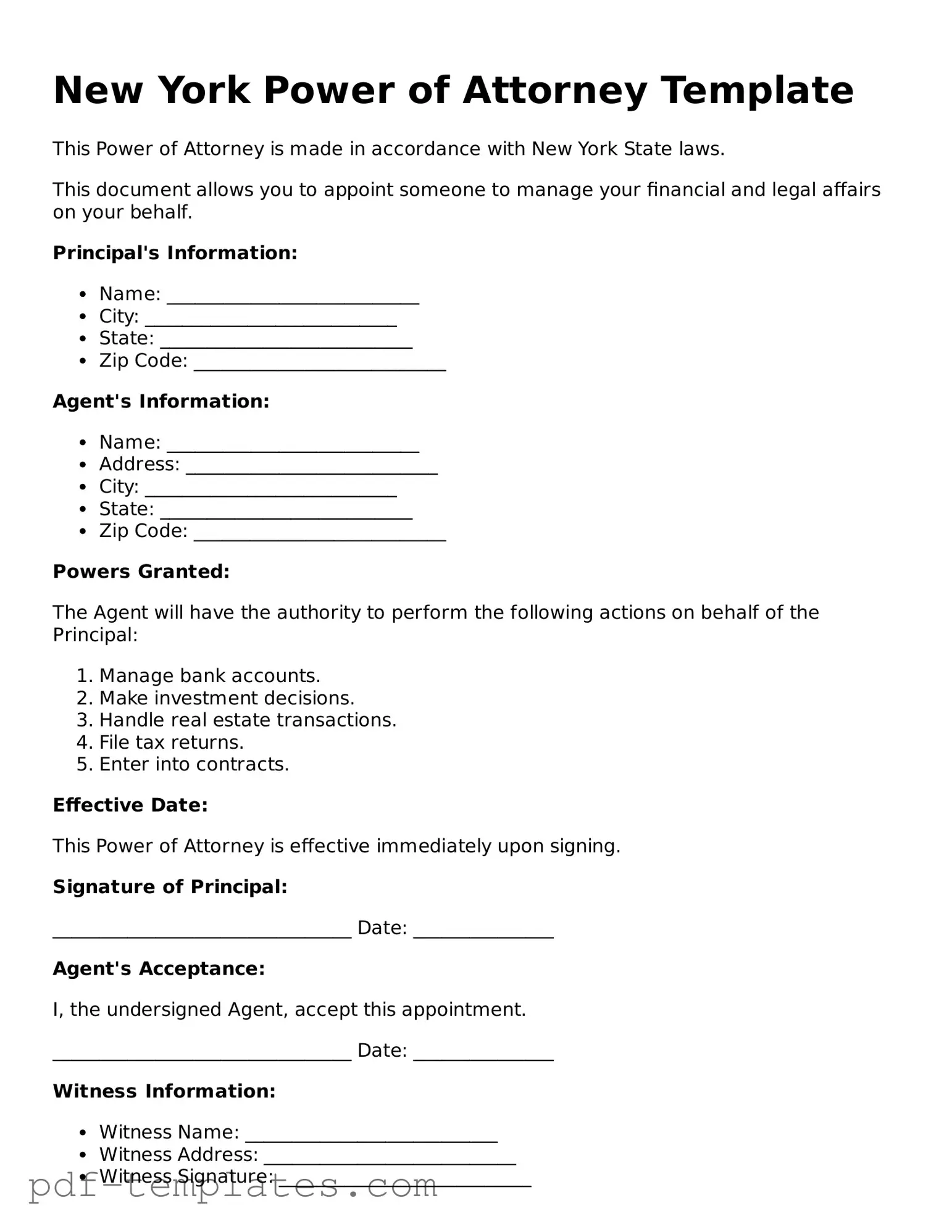The New York Power of Attorney form is similar to the Advance Healthcare Directive. Both documents allow individuals to appoint someone to make decisions on their behalf. While the Power of Attorney focuses on financial and legal matters, the Advance Healthcare Directive specifically addresses medical decisions. This ensures that a person's healthcare preferences are respected when they cannot communicate them directly.
Another document similar to the Power of Attorney is the Living Will. This legal document outlines a person's wishes regarding medical treatment in situations where they cannot express their desires. Like the Power of Attorney, a Living Will provides guidance to healthcare providers and family members. However, it does not appoint an agent to make decisions, unlike the Power of Attorney.
The Healthcare Proxy is also akin to the Power of Attorney. This document allows someone to make healthcare decisions for another person if they are unable to do so. While both documents serve to protect an individual's interests, the Healthcare Proxy is specifically focused on medical choices, whereas the Power of Attorney covers a broader range of financial and legal matters.
A Trust is another document that shares similarities with the Power of Attorney. Both can be used to manage assets and provide for beneficiaries. However, a Trust is a legal arrangement that holds and manages property, while the Power of Attorney grants authority to an individual to act on someone else's behalf. Trusts can also avoid probate, which is not a feature of a Power of Attorney.
The Will is a key document that resembles the Power of Attorney in that both deal with the management of a person's affairs. A Will outlines how a person's assets will be distributed after their death, while the Power of Attorney is effective during a person's lifetime. Both documents are essential for ensuring that an individual's wishes are honored, but they serve different purposes and timelines.
The Declaration of Guardian is similar to the Power of Attorney in that it allows individuals to designate someone to make decisions on their behalf. This document is specifically for appointing a guardian for minors or incapacitated adults. While the Power of Attorney can cover financial and legal decisions, the Declaration of Guardian focuses on personal and custodial matters.
Lastly, the Authorization for Release of Information shares some similarities with the Power of Attorney. This document allows individuals to grant permission for others to access their personal information, such as medical records or financial details. While the Power of Attorney gives broader authority to act on behalf of someone, the Authorization for Release of Information is more limited in scope, focusing on information sharing rather than decision-making.
